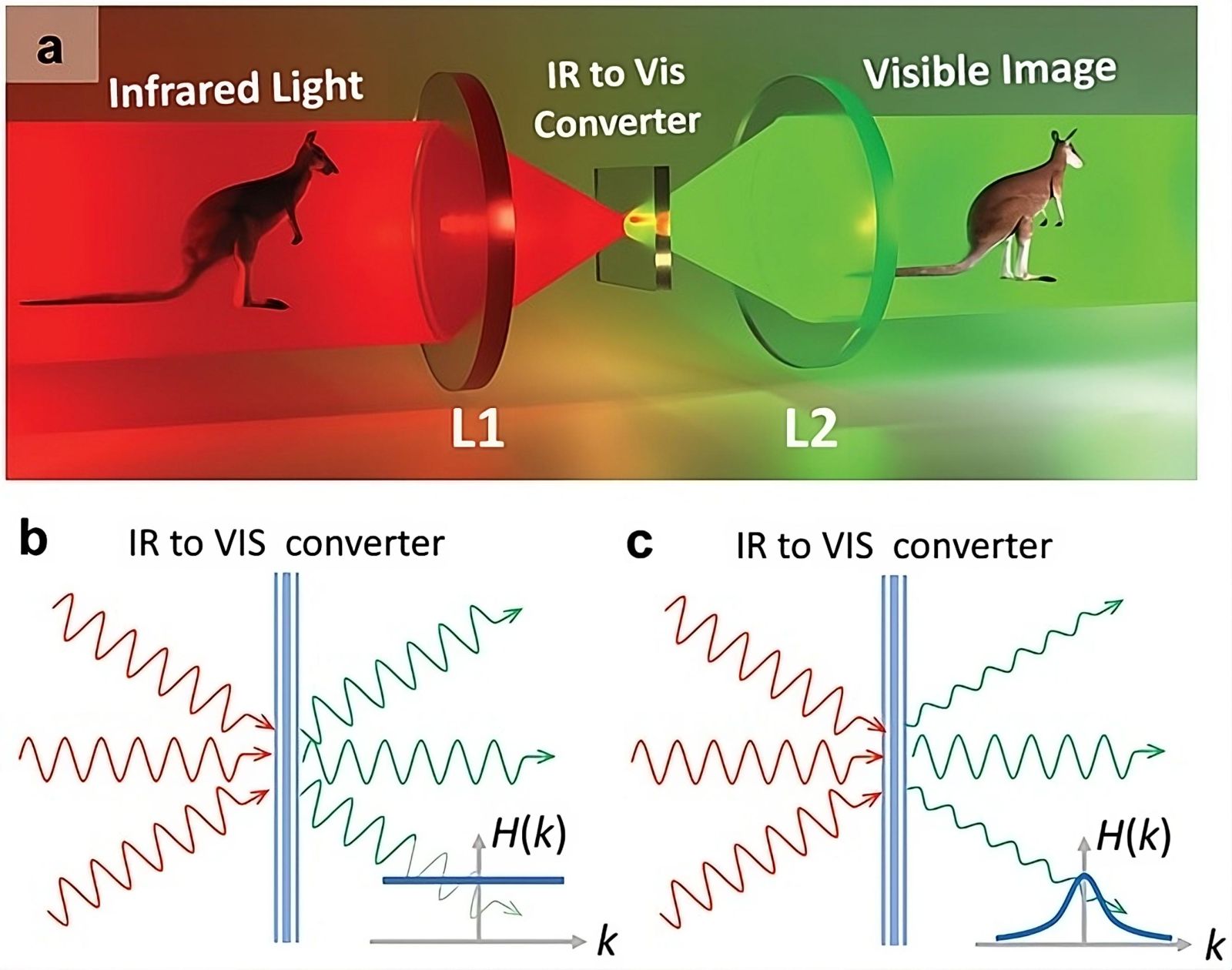Will our glasses soon be equipped with a discreet night vision filter?
Published by Cédric,
Author of the article: Cédric DEPOND
Source: Advanced Materials
Other Languages: FR, DE, ES, PT
Author of the article: Cédric DEPOND
Source: Advanced Materials
Other Languages: FR, DE, ES, PT
Follow us on Google News (click on ☆)

Infrared (IR) to visible (VIS) conversion for imaging applications.
a) Diagram of a non-linear converter for infrared imaging: infrared light illuminating an object and passing through a lens (L1) is converted into visible light and captured by another lens (L2) to be observed by a conventional silicon camera.
b) The ideal converter should convert all incident rays at different angles with the same efficiency, i.e., H(k) = constant. H(k) is the conversion transfer function.
c) In practice, due to the angular dispersion of the converter, components at normal incidence are converted more efficiently than those at larger incidence angles, i.e., H(klow) > H(khigh).
Traditionally, night vision has been reserved for the military, hunters, and photographers due to the weight and bulk of the equipment. These devices use a complex mechanism where infrared photons are converted into electrons, amplified, and then reconverted into visible photons. These systems are not only heavy but also require cryogenic cooling to avoid thermal noise.
The new technology developed by TMOS uses a non-local lithium niobate metasurface for photon upconversion. Photons pass through a resonant metasurface where they are mixed with a pump beam, increasing their energy and converting them directly into visible light without an intermediate electron step. This process works at room temperature, eliminating the need for bulky cooling systems.
This simplified approach allows for significant miniaturization of the night vision device. The new filter weighs less than one gram and can be applied as a film on ordinary glasses. Laura Valencia Molina, one of the authors of the study, emphasizes that this innovation overcomes previous limitations of angular loss inherent to non-local metasurfaces, enabling high-efficiency upconversion of 1550 nm infrared light into 550 nm visible light.
This innovation opens the door to various applications. Night vision glasses for the general public could enhance safety during nighttime driving, walks, or work in low-light conditions, without the need for cumbersome equipment. By simultaneously capturing visible and invisible light in a single image, this technology offers a better-quality view in darkness.